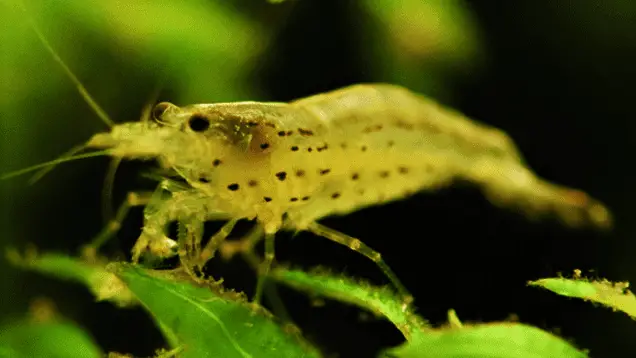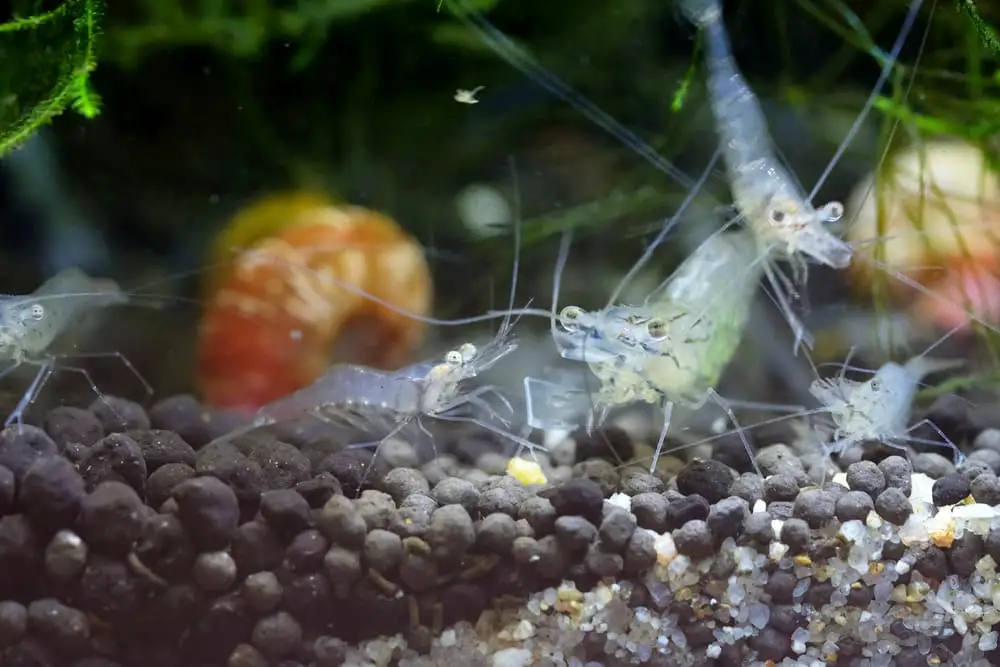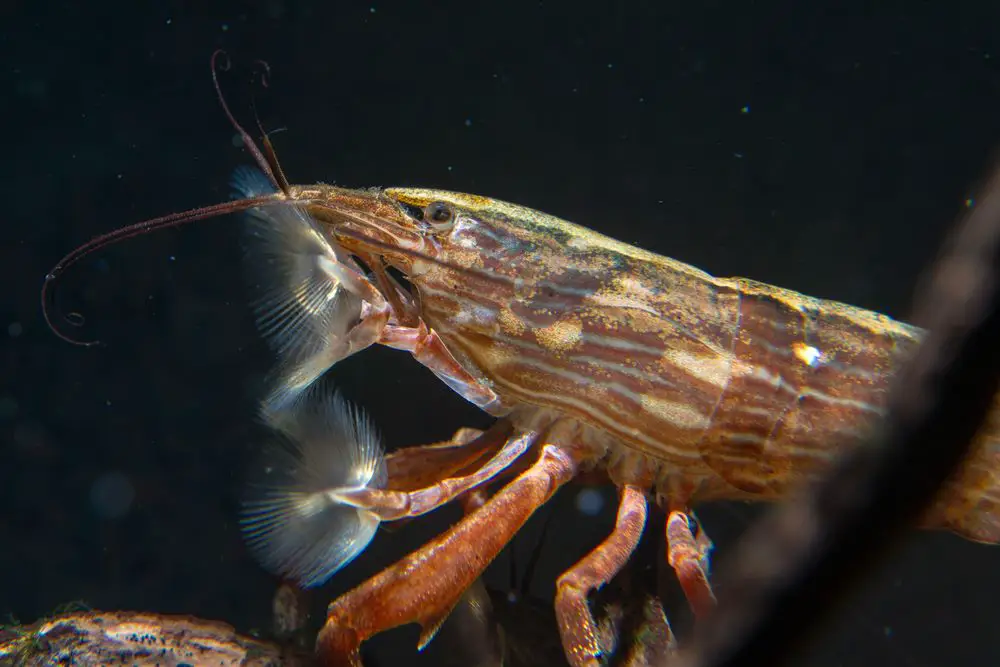Have you ever wondered if you could house dwarf puffers with cherry or crystal red shrimp? This question often arises among aquarists who are charmed by the unique personalities of dwarf puffers and the vibrant colors of cherry and crystal red shrimp. For instance, imagine a tank that houses galaxy rasboras, cherry shrimp, and crystal red shrimp. The owner absolutely loves dwarf puffers and is curious about the potential impact of introducing one to this existing ecosystem. Would the dwarf puffer harm the shrimp population? Would it pose a threat to the galaxy rasboras? These are valid concerns that need to be addressed.
The compatibility of dwarf puffers with shrimp largely depends on the individual personality of the puffer. Some puffers may not bother the shrimp at all, while others may constantly harass or even eat them. Shrimp and snails are natural prey for puffers, so keeping invertebrates with them is generally not recommended. However, there have been instances where puffers and shrimp coexist peacefully. It’s important to note that these are exceptions rather than the rule. Therefore, if you’re considering adding a dwarf puffer to a tank with shrimp, proceed with caution and be prepared for potential losses in your shrimp population.
As an avid aquarist for over a decade, I’ve had my fair share of trials and triumphs. One of the most challenging and intriguing experiences I’ve had was attempting to cohabitate dwarf puffers with cherry and crystal red shrimp.
In the early days, I was captivated by the unique personalities of dwarf puffers and the vibrant colors of the shrimp. I thought, “Why not bring the best of both worlds together?” Little did I know, this decision would lead me down a path of fascinating discoveries and tough lessons.
I remember introducing my first dwarf puffer into a well-established tank, home to a thriving community of cherry shrimp. The first few days were peaceful, almost deceivingly so. Then, I noticed a decline in my shrimp population. It was a disheartening sight, but it sparked a quest for knowledge and understanding that has greatly enriched my journey as an aquarist.
Over the years, I’ve experimented with different tank setups, observed the behaviors of various dwarf puffers, and even tried my hand at “training” these little creatures. Through it all, I’ve learned that while there are exceptions, the general rule of thumb is that dwarf puffers and shrimp are not the best tank mates.
In this post, I’ll share my insights and experiences, shedding light on the complex relationship between dwarf puffers and shrimp. Whether you’re a seasoned aquarist or a beginner, I hope this information will guide you in making informed decisions for your aquatic pets.

What are the Behavioral Traits of Dwarf Puffers that Impact their Compatibility with Shrimp?
Dwarf puffers, also known as pea puffers, are known for their unique personalities and curious nature. They are intelligent, active, and have a keen eye for detail, which makes them fascinating to watch. However, these traits also contribute to their reputation as challenging tank mates, especially for small invertebrates like shrimp.
One of the key behavioral traits of dwarf puffers is their predatory instinct. In the wild, their diet primarily consists of small crustaceans, insects, and various types of worms. This means that in an aquarium setting, they are likely to see shrimp as potential food. They are known to nip at and harass shrimp, often leading to fatal injuries.
Another important aspect of their behavior is their territorial nature. Dwarf puffers are not schooling fish and prefer to have their own space. In a confined space like an aquarium, they can become aggressive if they feel their territory is being invaded. This can be problematic in a mixed-species tank, as they might see other inhabitants, including shrimp, as intruders.
Dwarf puffers are highly adaptable and opportunistic. They are quick to learn and exploit any opportunities for food. This means that even if they don’t initially hunt the shrimp, they might eventually learn to do so.
These behavioral traits is crucial when considering dwarf puffers as potential tank mates for shrimp. It’s important to remember that while there are exceptions, these behaviors are typical of the species, and careful consideration should be given to ensure the wellbeing of all tank inhabitants.

What Precautions Should be Taken when Introducing Dwarf Puffers into a Shrimp Tank?
Introducing dwarf puffers into a shrimp tank requires careful planning and consideration due to the puffers’ predatory instincts and territorial nature. Here are some precautions you can take to minimize potential issues:
- Tank Size: Dwarf puffers need ample space to establish their own territories. A cramped tank can lead to increased aggression. As a rule of thumb, provide at least 5 gallons of space per puffer.
- Tank Setup: Create plenty of hiding spots using plants, rocks, and driftwood. This gives shrimp places to retreat and can help diffuse any territorial disputes.
- Shrimp Population: Start with a healthy, established shrimp population. Dwarf puffers are less likely to decimate a large, thriving shrimp colony.
- Feeding: Make sure your puffer is well-fed with a diet that satisfies its need for hunting. Foods like snails, which are part of their natural diet, can help keep them from turning to the shrimp for food.
- Observation: Monitor your tank closely, especially in the first few weeks after introducing a dwarf puffer. Look for signs of aggression or shrimp loss.
- Backup Plan: Have a backup plan in case the introduction doesn’t go well. This could be a separate tank or a local fish store that can take the puffer if necessary.
Even with these precautions, there’s always a risk when keeping dwarf puffers with shrimp. Each puffer has its own personality, and what works for one might not work for another. Always prioritize the well-being of your tank’s inhabitants.

Are there Specific Types of Shrimp that Coexist Better with Dwarf Puffers?
When it comes to cohabitating with dwarf puffers, the type of shrimp can indeed make a difference. However, it’s important to note that no shrimp species is completely safe due to the puffers’ natural predatory instincts. That said, some types of shrimp have been observed to fare better than others.
Amano Shrimp: Amano shrimp are often recommended for tanks with dwarf puffers. They are larger and more robust than many other shrimp species, making them less of a target. Their size can deter puffers from seeing them as potential prey.
Ghost Shrimp: Ghost shrimp are another option. They are not as colorful or attractive as other shrimp species, which can make them less noticeable to puffers. However, they are smaller than Amano shrimp and could still become targets, especially for larger or more aggressive puffers.
Cherry Shrimp: Cherry shrimp are often kept with dwarf puffers, but with mixed results. They are small and brightly colored, making them easy targets. However, they breed quickly, which can help maintain the population even if some are lost to the puffers.
Regardless of the type of shrimp, it’s crucial to provide plenty of hiding places and monitor the tank closely for any signs of aggression or predation. Remember, each puffer has its own personality, and what works for one might not work for another. Always prioritize the well-being of your tank’s inhabitants.
What are the Alternatives if Dwarf Puffers and Shrimp Cannot Coexist Peacefully?
If you find that dwarf puffers and shrimp cannot coexist peacefully in your tank, don’t worry, there are several alternatives you can consider to ensure all your aquatic pets have a safe and comfortable environment.
- Separate Tanks: One of the most straightforward solutions is to keep dwarf puffers and shrimp in separate tanks. This allows you to cater to the specific needs of both species without worrying about potential conflicts.
- Different Tank Mates: If you’re keen on having a community tank, consider choosing tank mates that are more compatible with dwarf puffers. Fast-swimming, short-finned fish that occupy the upper levels of the tank, such as celestial pearl danios or endlers livebearers, can be good choices.
- Larger Shrimp Species: If you’re set on keeping shrimp with your dwarf puffers, consider larger, more robust shrimp species like bamboo shrimp or vampire shrimp. Their size can deter puffers from seeing them as potential prey.
- Professional Advice: If you’re unsure about the best course of action, don’t hesitate to seek advice from a local aquarium store or an online community of aquarists. They can provide valuable insights based on their experiences and knowledge.
The key to a successful aquarium is understanding and catering to the needs of its inhabitants. With careful planning and consideration, you can create a thriving environment for your aquatic pets.
Conclusion & Call to Action
In summary, while dwarf puffers and shrimp can sometimes coexist in the same tank, it’s not a combination that’s recommended for everyone. The predatory and territorial nature of dwarf puffers can pose significant challenges and risks to your shrimp population. However, with careful planning, monitoring, and a willingness to adapt, it’s possible to create a thriving environment for your aquatic pets.
If you’re considering this combination, remember to take into account the specific needs and behaviors of both species. Provide plenty of space and hiding spots, monitor your tank closely, and always have a backup plan.
Lastly, don’t hesitate to seek advice from experienced aquarists. The world of aquarium keeping is vast and full of people willing to share their knowledge and experiences. If you need any help, please don’t hesitate to reach out. If you can’t reach me here, check out the “Aquarium Shrimp Keeping” group on Facebook.
On a final note, remember that the well-being of your pets should always be your top priority. With patience, knowledge, and a little bit of trial and error, you can create a beautiful and harmonious underwater world. Happy shrimp keeping!
FAQ
Q. Can shrimp live with dwarf puffers?
A. Yes, shrimp can live with dwarf puffers, but it’s not always ideal. The compatibility largely depends on the individual personality of the puffer. Some puffers may not bother the shrimp at all, while others may constantly harass or even eat them. Therefore, if you’re considering adding a dwarf puffer to a tank with shrimp, proceed with caution and be prepared for potential losses in your shrimp population.
Q. Do pygmy puffers eat shrimp?
A. Yes, pygmy puffers, also known as dwarf puffers, can and often do eat shrimp. Shrimp are part of their natural diet in the wild, and in a tank environment, puffers may see them as potential food. However, the likelihood of this happening can depend on various factors, including the size and type of shrimp, the individual puffer’s personality, and the specific conditions within the tank.
Q. Will Amazon puffers eat shrimp?
A. Amazon puffers, like most pufferfish, are carnivorous and have been known to eat shrimp. However, they are generally larger than dwarf puffers and may require larger prey. It’s always important to research the specific dietary needs and behaviors of your fish to ensure a healthy and harmonious tank environment.
Q. What fish can I put with dwarf puffers?
A. Dwarf puffers can be kept with fast-swimming, short-finned fish that occupy the upper levels of the tank, such as celestial pearl danios or endlers livebearers. However, due to their territorial nature, dwarf puffers are often best kept in a species-only tank. Always research and consider the specific needs and behaviors of your fish when planning your tank setup.
Q. Can you keep shrimp with pea puffers?
A. Yes, you can keep shrimp with pea puffers, but it’s not always recommended. Pea puffers, especially those bred and raised in captivity, may not attack or eat shrimp. However, due to their natural predatory instincts, there’s always a risk. If you decide to try this combination, it’s important to monitor your tank closely and be prepared to separate the puffers and shrimp if necessary.
